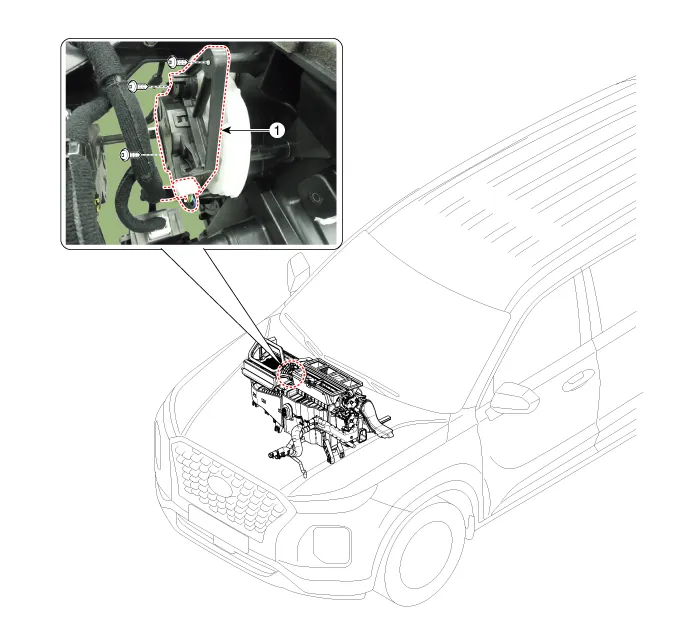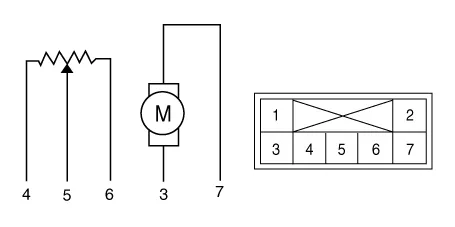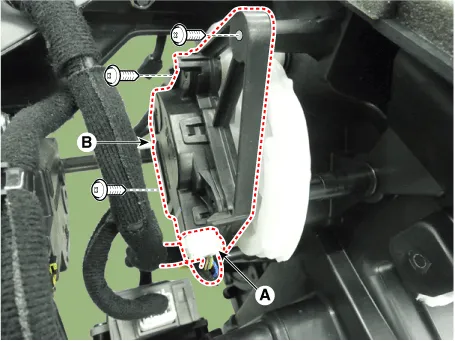Hyundai Palisade (LX2): Heater / Mode Control Actuator
Description and operation
| Description |
Components and components location
| Components Location |

| 1. Mode control actuator |
Repair procedures
| Inspection |
| 1. |
Turn the ignition switch OFF.
|
| 2. |
Disconnect the mode control actuator connector.
|
| 3. |
Verify that the mode control actuator operates to the defrost mode when
connecting 12V to terminal 3 and grounding terminal 4.
Verify that the mode control actuator operates to the vent mode when
connected in reverse.
|
| 4. |
Connect the mode control actuator connector.
|
| 5. |
Turn the ignition switch ON.
|
| 6. |
Check the voltage between terminal 5 and 4.
Specification
It will feedback the current position of the actuator to controls.
|
| 7. |
If the measured voltage is not within specification, substitute with
a known-good mode control actuator and check for proper operation.
|
| 8. |
Replace the mode control actuator if it is proved that there is a problem
with it.
|
| Replacement |
| 1. |
Disconnect the negative (-) battery terminal.
|
| 2. |
Remove the main crash pad assembly.
(Refer to Body - "Main Crash Pad Assembly")
|
| 3. |
Separate the mode control actuator connector (B) and loosen the mounting
screw and remove the mode control actuator (A).
|
| 4. |
Install in the reverse order of removal.
|
Description and operation Description The heater unit includes mode control actuator and temperature control actuator. The temperature control actuator is located at the heater unit.
Description and operation Description The auto defogging sensor is installed on the front window glass. The sensor judges and sends signal if moisture occurs to blow out wind for defogging.
Other information:
Hyundai Palisade (LX2) 2020-2025 Service Manual: Front Radar Unit
Specifications Specification Item Specification Power supply (V) 12 Operation voltage (V) 9 - 16 Description and operation Description The smart cruise control unit is installed on the front right-hand side of the chass
Hyundai Palisade (LX2) 2020-2025 Service Manual: Troubleshooting
Trouble Symptom Charts Trouble Symptom 1 Trouble Symptom 2 Trouble symptom Probable cause Remedy The set vehicle speed varies greatly upward or downward "Surging" (repeated alternating acceleration and deceleration) occurs after set
Categories
- Manuals Home
- Hyundai Palisade Owners Manual
- Hyundai Palisade Service Manual
- Rear Seats
- Front Seats
- Smart Cruise Control Switch
- New on site
- Most important about car


